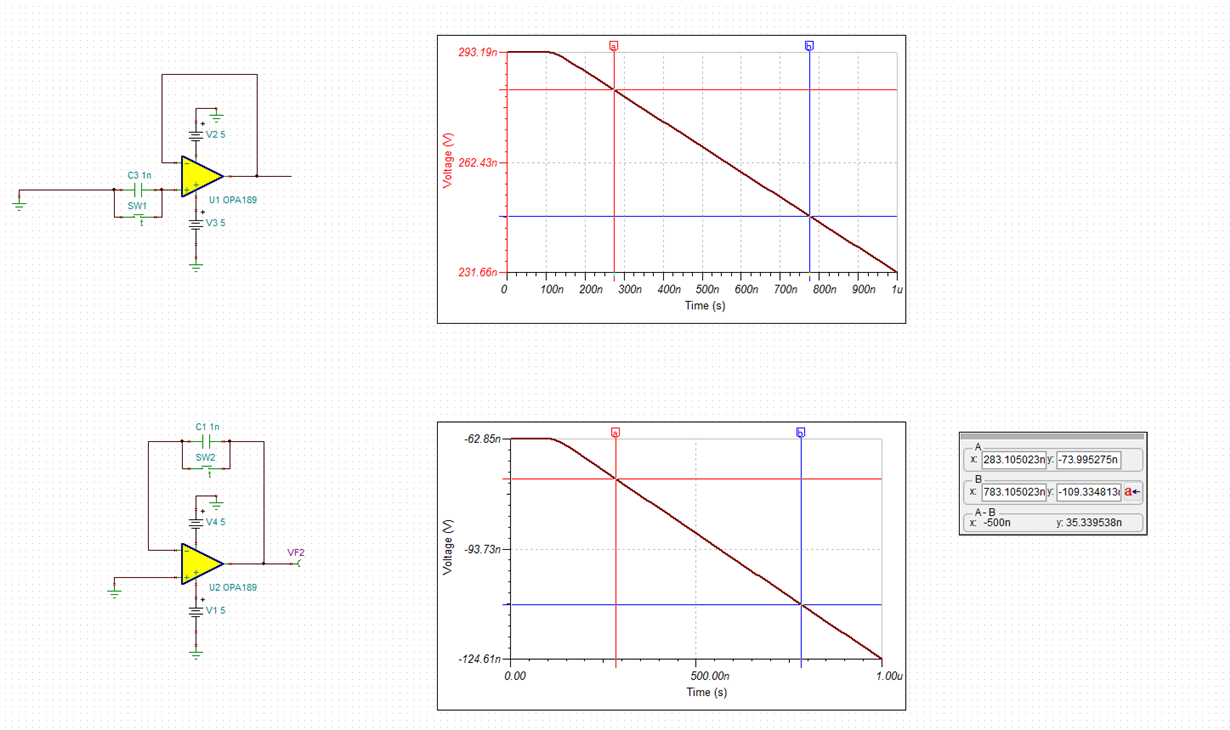Other Parts Discussed in Thread: TINA-TI, LMC660
Hi all,
My customer tried to measure input bias current of OPA189 by below circuit.
In order to predict the offset voltage and Iib, they plotted the values of Rf as 0, 1 k, 10 k, 100 k and converted from the output and estimated the value of Iib, it was about 1000 pA.
I think it is necessary to consider extrinsic factors such as leakage current on PCB in the case of IIB of several 10pA like OPA189.
Do you have a recommended measurement circuit?
Regards,
Toshi



